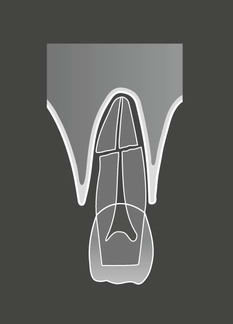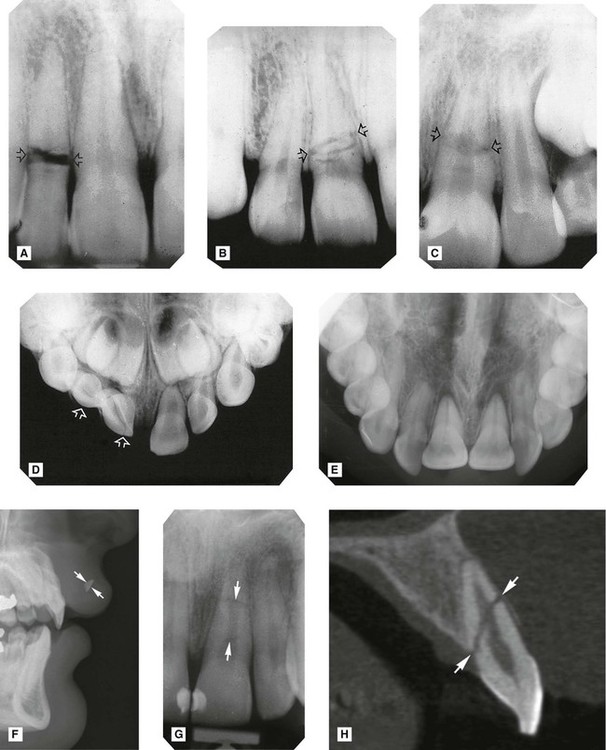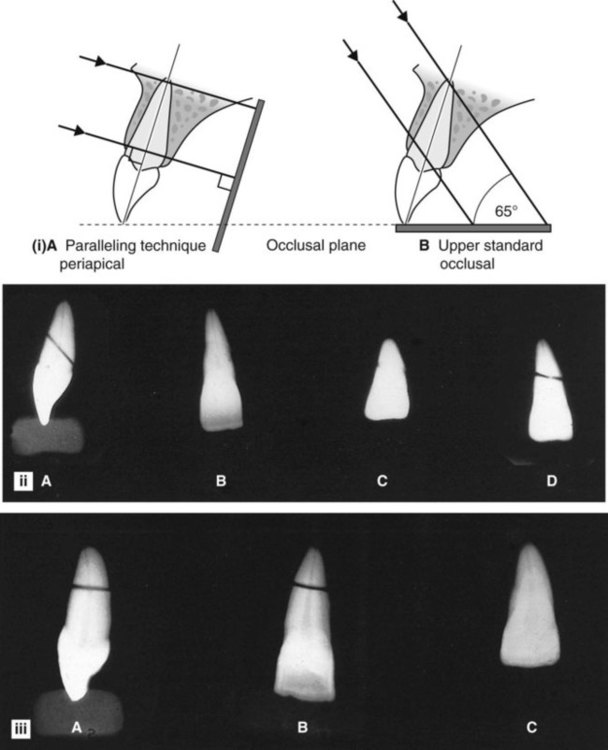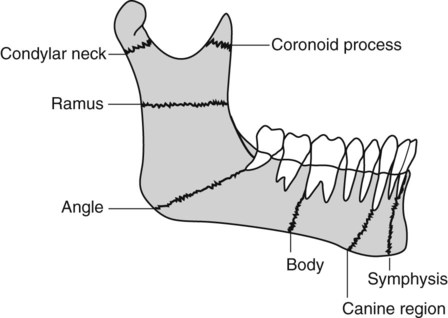Trauma to the teeth and facial skeleton
Injuries to the teeth and their supporting structures
Types of injury
Other injuries
• Displacement of an underlying developing tooth which may become dilacerated as a result
• Soft tissue injuries, such as:
Radiographic investigation
• Two views of the injured tooth from different angles, ideally at right angles to one another, but more usually with the X-ray tubehead in two different positions in the vertical plane.
• Small volume CBCT (if available) providing coronal, sagittal and axial images.
• Reproducible views to provide a base-line assessment and to allow subsequent follow-up evaluation
• Views of the chest and/or abdomen if a tooth or foreign body is thought to have been inhaled or swallowed, including:
Diagnostic information provided
The diagnostic information provided by these radiographs may include:
• The type of injury to the teeth
• The degree of displacement of the tooth fragments
• The stage of root development
• The condition of the apical tissues
• The presence, site and displacement of alveolar bone fractures
• The condition of adjacent or underlying teeth
Radiographic interpretation
The expected radiographic features indicating a fractured root are shown in Fig. 29.1 and include:
• A radiolucent line between the fragments
• An alteration in the outline shape of the root and discontinuity of the periodontal ligament shadow.
Examples of injured teeth and some of the more common post-injury complications evident radiographically are shown in Figs 29.2 and 29.3.
Limitations of radiographic interpretation of fractured roots
As shown in Fig. 29.4 the radiographic appearances can be influenced by:
• The position and severity of the fracture
• The degree of displacement or separation of the fragments
• The position of the film and X-ray tubehead in relation to the fracture line(s).
It is for these reasons that a minimum of two views, from two different angles, is essential if small volume CBCT is not available.
Skeletal fractures
• The site and direction of the fracture line(s)
• The degree of displacement and separation of the bone ends
• The relationship of teeth to the fracture line
• The location of associated foreign bodies in hard and soft tissues
• The presence of coincidental or contributory disease
• The alignment of the bone fragments after treatment
• Healing and the identification of post-trauma complications including infection, non-union or malunion.
Stay updated, free dental videos. Join our Telegram channel

VIDEdental - Online dental courses




 (arrowed) with wide separation of the fragments. B Root fracture of
(arrowed) with wide separation of the fragments. B Root fracture of  (arrowed) with minimal separation of fragments. C Root fracture of
(arrowed) with minimal separation of fragments. C Root fracture of  (arrowed) with marked discontinuity in root outline. D Intrusion and fracture of
(arrowed) with marked discontinuity in root outline. D Intrusion and fracture of  (arrowed). E Palatal luxation of
(arrowed). E Palatal luxation of  – crowns displaced palatally, roots displaced buccally – hence they appear foreshortened. Note also the widening of the periodontal ligament space. F Tooth fragment in the upper lip (arrowed). G Periapical and H Sagittal CBCT scan of a fractured
– crowns displaced palatally, roots displaced buccally – hence they appear foreshortened. Note also the widening of the periodontal ligament space. F Tooth fragment in the upper lip (arrowed). G Periapical and H Sagittal CBCT scan of a fractured  (arrowed).
(arrowed).
 at the time of injury (arrowed). B
at the time of injury (arrowed). B  of the same patient showing a complete, but abnormally shaped, root with (root) fracture (arrowed). The periodontal ligament shadow is continuous. C Apical infection and resorption of
of the same patient showing a complete, but abnormally shaped, root with (root) fracture (arrowed). The periodontal ligament shadow is continuous. C Apical infection and resorption of  resulting in separation and displacement of the root fragments (open arrows). A radiopaque calcium hydroxide dressing is evident in the root canal with a radiopaque temporary restoration in the crown. The radiolucent area in between contains cottonwool (solid arrow). D Apical infection, external resorption of the apex and extensive internal root resorption (arrowed) of
resulting in separation and displacement of the root fragments (open arrows). A radiopaque calcium hydroxide dressing is evident in the root canal with a radiopaque temporary restoration in the crown. The radiolucent area in between contains cottonwool (solid arrow). D Apical infection, external resorption of the apex and extensive internal root resorption (arrowed) of  , following a coronal fracture involving the pulp. A radiopaque temporary dressing is evident in the crown. E Large area of apical infection associated with
, following a coronal fracture involving the pulp. A radiopaque temporary dressing is evident in the crown. E Large area of apical infection associated with  (open arrows). Root formation of
(open arrows). Root formation of  has ceased and the apex is immature. In addition, the
has ceased and the apex is immature. In addition, the  (damaged but not killed by the original trauma) shows complete sclerosis of the pulp chamber (solid arrows). F Severe dilaceration and non-eruption of
(damaged but not killed by the original trauma) shows complete sclerosis of the pulp chamber (solid arrows). F Severe dilaceration and non-eruption of  (arrowed), following trauma to the deciduous incisors several years previously.
(arrowed), following trauma to the deciduous incisors several years previously.

